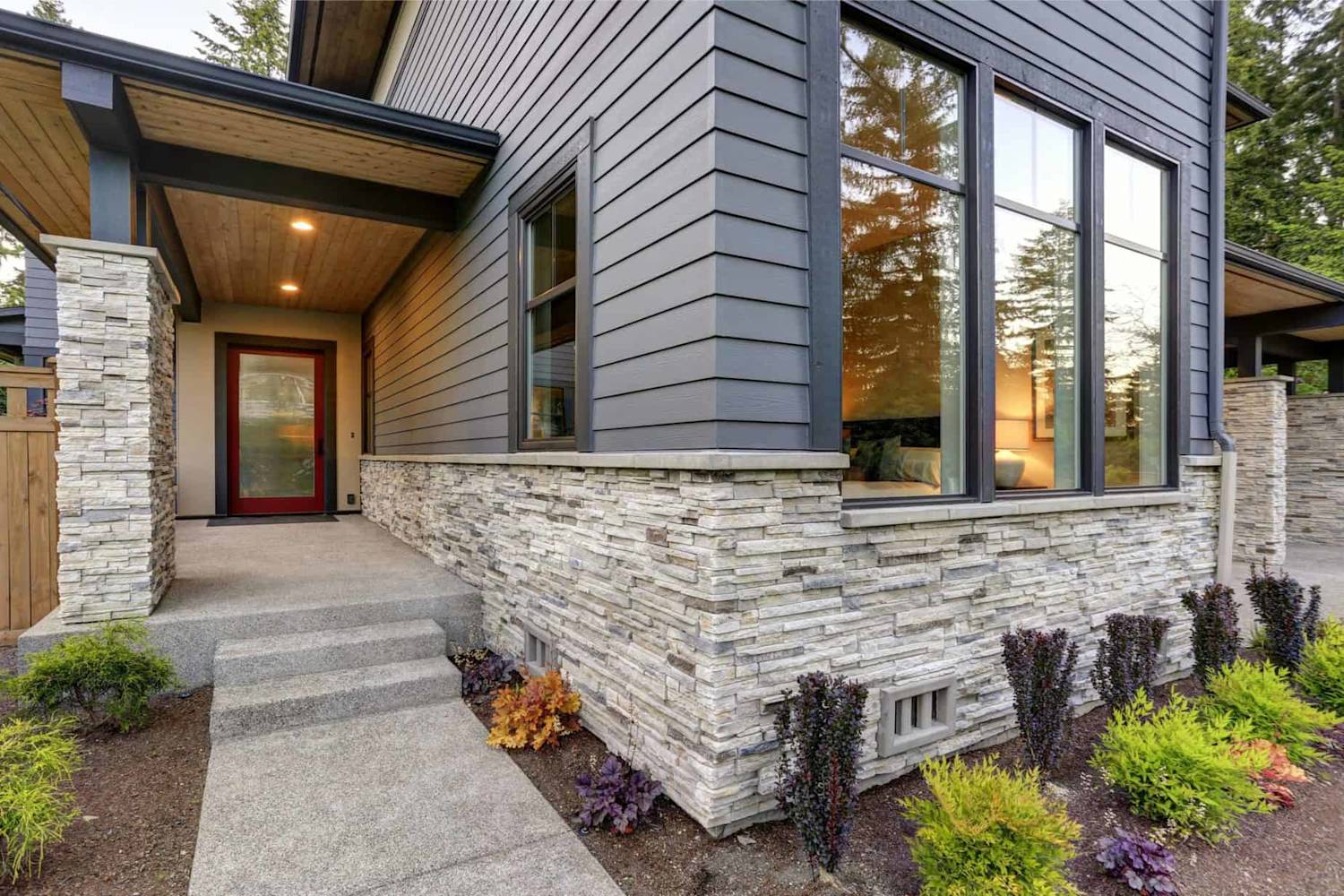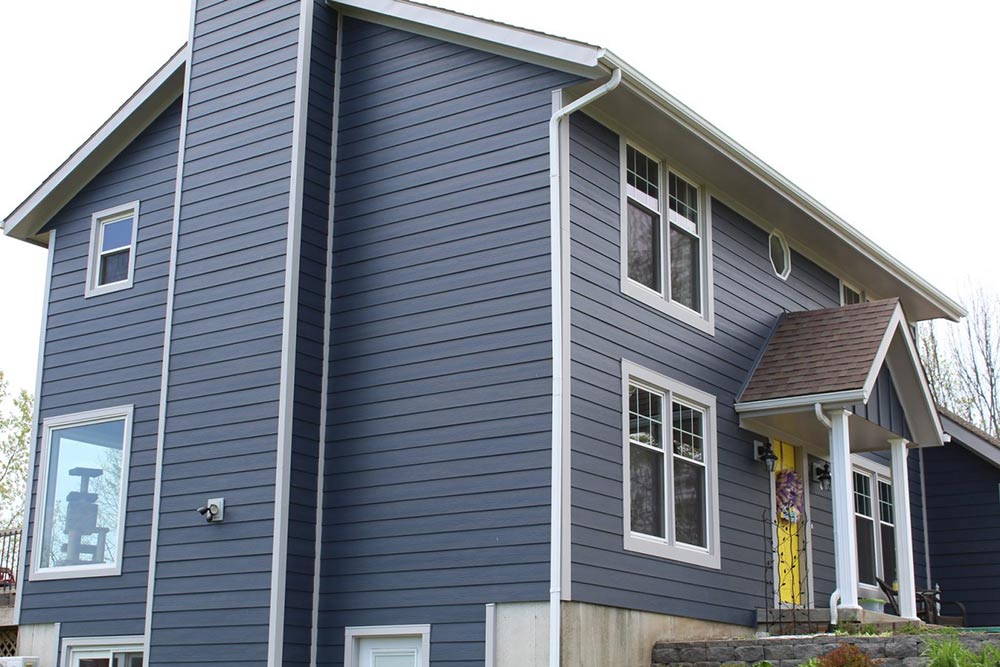Siding and trim installation: Typical Siding Problems and How to Fix Them
Siding contractors Baltimore MD: Outside Cladding Can Greatly Boost The Look And Security Of Your Home
Checking out the Spectrum of Siding Materials
When it concerns siding, the choices can seem like a maze. Each material carries its own personality, performance peculiarities, and beauty. Ever questioned why some homes boast that rustic wooden attraction while others gleam with smooth vinyl panels? Let's peel back the layers and dive into the most popular siding options that form our areas.
Wood Siding: The Classic Storyteller
Wood has a nearly poetic connection with homes; it ages like fine red wine, getting character through the seasons. Beware, the romance of wood needs attention. It's susceptible to wetness and bugs, so regular upkeep is the cost of admission. The warmth and texture it imparts? Irreplaceable.
Vinyl Siding: The Chameleon of Outsides
If versatility had a poster child, vinyl siding would be it. This product can be found in a rainbow of colors and textures, mimicking wood, stone, or perhaps brick with surprising fidelity. It's low-maintenance, long lasting, and resistant to fading-- perfect for house owners who choose to invest weekends checking out rather than scraping paint.
Fiber Cement: The Silent Strength
Fiber cement often flies under the radar however loads a punch. Composed of sand, cement, and cellulose fibers, it withstands fire, insects, and rot. Imagine a siding that looks like wood however chuckles in the face of termites and weather condition. It's a favorite among those who look for durability without sacrificing aesthetics.
Metal Siding: The Modern Minimalist
Aluminum and steel siding have surged in appeal, especially for modern homes. Their streamlined lines and reflective surface areas offer a modern twist. Plus, metal siding can shrug off damages and scratches much better than you 'd expect. Curious about a siding that's both industrial and inviting? Metal may be your answer.
Other Noteworthy Products
- Stucco: Perfect for Mediterranean vibes, it offers a textured finish that's both long lasting and energy-efficient.
- Brick Veneer: A classic choice, delivering strong protection with traditional appeal.
- Engineered Wood: Combines the appeal of wood with improved resistance to decay.

Contrast Table of Common Siding Types
| Material | Toughness | Maintenance | Look | Expense Effectiveness |
|---|---|---|---|---|
| Wood | Moderate | High | Natural, warm | Medium |
| Vinyl | High | Low | Varies widely | High |
| Fiber Cement | Extremely High | Low | Wood-like | Medium |
| Metal | High | Low | Modern, smooth | Medium |
| Stucco | High | Medium | Textured | Medium |
Selecting the best siding often comes down to a mix of individual taste and practical needs. Your home's outside isn't just about security-- it's a canvas showing your special story. So, what does your siding say about you?
Mastering the Art of Siding Installation
Ever observed how a home's outside can either whisper or shout its personality? The setup strategies behind siding hold the secret to that subtle or strong declaration. When it concerns siding, precision is non-negotiable; a single misaligned plank can welcome moisture or let cold drafts slip in, undermining years of effort.
Preparation: The Unsung Hero
Before the very first nail hits the wood or vinyl, comprehending the substrate is vital. Is the sheathing level!.?. !? Are there spaces behind the old siding that could trap water? Overlooking these details typically causes warping or premature deterioration. A seasoned installer will always:
- Examine and repair the sheathing surface.
- Set up a high-quality weather-resistant barrier to eliminate wetness seepage.
- Think about adding furring strips for improved airflow in cases of unequal walls.
Nailing Methods: More Than Simply Hammer and Nail
One might believe that nailing is straightforward-- hit the slab, secure it, done. But each siding material requires an unique technique. For example, wood siding needs nails long enough to permeate the sheathing however not so deep that they divided the plank. Vinyl, on the other hand, requires a fragile balance; nails need to permit for growth and contraction to prevent buckling.
Here's a fast rundown of specialist nailing pointers:
- Usage galvanized or stainless-steel nails to resist rust.
- Leave a small gap in between nail head and siding surface area to accommodate movement.
- Space nails equally-- too close and the siding can split; too far and it might loosen up.
Seam Techniques and Overlaps
Seams can be the Achilles' heel of siding installation. Have you ever seen siding panels that appear like they're gradually peeling? Often, it is because of incorrect overlapping or poorly sealed joints. Welcoming a shingle-style overlap, where each panel covers the one below by about an inch, produces a natural water-shedding result.
Pro tips include:
- Stagger joints in between courses to lessen water invasion.
- Use flexible, paintable caulking sparingly to seal corners and joints.
- Make sure that corner posts are tightly fitted however still permit product motion.
Dealing with Corners and Trim
Corners aren't just aesthetic details-- they're tension points. Setting up J-channels and corner trims appropriately demands perseverance and skill. A common trap is cutting corners too tight, which limits siding growth and results in warping or bubbling. Permitting a small gap and click here then sealing with a proper trim helps maintain integrity gradually.
Advanced Techniques: Beyond the Basics
| Method | Function | Advantage |
|---|---|---|
| Rain Screen Setup | Produces an aerated cavity behind siding | Enhances wetness management and extends siding life expectancy |
| Butt Joints with Flashing | Avoids water ingress at panel ends | Boosts toughness and reduces maintenance |
| Customized Furring Strip Layouts | Makes sure even siding surface on uneven walls | Improves looks and siding efficiency |
Have you ever questioned why some siding jobs look perfect for years, while others reveal wear after a couple of seasons? The secret lies not simply in the products but in the finesse of installation. Every cut, every nail, every overlap narrates-- a story of craftsmanship, weather-readiness, and attention to detail.
Maintenance and Repair Tips for Siding
When you glance at your home's exterior, the siding often bears the force of time and weather. Have you ever stopped briefly to believe about what hides behind that captivating exterior? Moisture can sneak in through small fractures, turning a small blemish into a pricey headache. That's why routine examination isn't simply excellent practice-- it's essential.
Picture this: a little chip in your vinyl siding, apparently insignificant, ends up being the entry point for water during a storm. Weeks later on, covert rot festers underneath, calmly deteriorating your home's structure. This is where an expert's eye and prompt action conserve you from prolonged damage.
Spotting Problem Early
- Try to find discoloration or warping, which typically signals water infiltration.
- Listen for hollow noises when tapping the siding; they may expose loose panels or underlying decay.
- Check caulking around windows and doors-- with time, it can break and compromise the seal.
Numerous homeowners undervalue the importance of cleaning their siding. Dirt and mildew don't simply mar the look; they accelerate wear. Using a soft brush with a mild cleaning agent keeps surfaces fresh without damaging the material. Avoid high-pressure cleaning unless you know the siding type can handle it-- otherwise, you risk requiring water behind the panels.
Basic Repair Work That Make a Difference
- Fill minor cracks or holes with high-quality exterior-grade sealants to avoid water intrusion.
- Replace damaged panels without delay to keep the siding's stability and curb appeal.
- Repaint wood siding every few years, however do not just slap on paint-- sand and prime first to guarantee lasting adhesion.
Here's a nugget frequently ignored: when repairing, always match the siding's growth homes. Disregarding this can cause panels to buckle or gaps to form later on, undoing your efforts.
Seasonal Siding Care
| Season | Maintenance Focus | Pro Tips |
|---|---|---|
| Spring | Examine for winter season damage; clean mildew | Use a vinegar solution for mildew elimination-- environmentally friendly and efficient |
| Summer | Check and fix caulking; repaint if needed | Paint throughout moderate temperatures to prevent quick drying and cracking |
| Fall | Clear rain gutters to avoid water damage | Trim trees to avoid branches scraping siding during winter season storms |
| Winter season | Monitor for ice dams and snow accumulation | Usage gentle snow elimination tools; avoid sharp objects |

Ever questioned why some siding lasts decades while others falter rapidly? The answer typically depends on the subtle subtleties of maintenance. It's not almost reacting to visible defects but preparing for how your home's environment will engage with its outside. By mastering these repair and maintenance tactics, you change siding from a mere protective shell into a lasting architectural possession.
Environmental Effect and Sustainability
When considering siding, the concern isn't just how it looks or lasts-- it's how it copes with the planet. Have you ever paused to think about the ripple result your option of outside material has on the environment? The manufacturing procedure alone might shock you. For instance, standard vinyl siding, while popular for its resilience and low upkeep, frequently includes petrochemical derivatives that remain in ecosystems long after disposal.
Wood siding, on the other hand, offers an eco-friendly resource, but it's not without its own eco-friendly footprint. The carbon expense of harvesting old-growth trees and the energy used in treatment and transport can be substantial. When sourced responsibly, wood acts like a carbon sink, locking away CO2 rather than releasing it.
Sustainability Metrics to Consider
- Embodied energy: The total energy consumed during extraction, production, and installation.
- Longevity and maintenance frequency: How typically will the siding need repairs or replacement?
- End-of-life recyclability: Can the product be repurposed or does it wind up in landfill?
- Thermal efficiency: Does the siding add to energy effectiveness, reducing heating and cooling needs?
Let's not neglect the frequently ignored impact of siding color and surface. Lighter tones show sunlight, minimizing heat absorption and lowering cooling expenses in warmer climates. Darker siding might increase energy loads but can be helpful in cooler regions seeking passive solar gain.
Specialist Tips for Eco-Friendly Siding Choices
- Select siding made from recycled material whenever possible; it reduces demand for virgin products.
- Look for products with third-party sustainability accreditations to verify ecological claims.
- Consider fiber cement siding, which mixes cement, sand, and cellulose fibers-- using resilience with less ecological toll than vinyl.
- Make sure correct insulation underneath siding to take full advantage of energy effectiveness, as siding alone isn't a thermal barrier.
- Keep your siding frequently; a clean exterior extends life expectancy and hold-ups replacement.
Keep in mind the old farmhouse down the lane? Its weathered cedar siding has actually represented over a century because it was crafted from in your area sourced lumber and kept with care, proving that sustainability isn't practically brand-new innovation-- it's about regard for products and environment. Could siding choices today echo that longevity and environmental mindfulness?